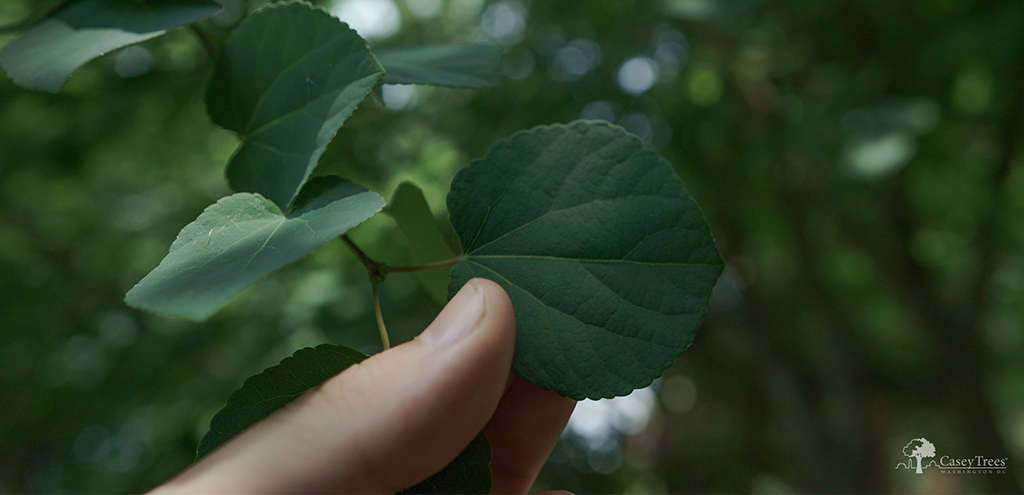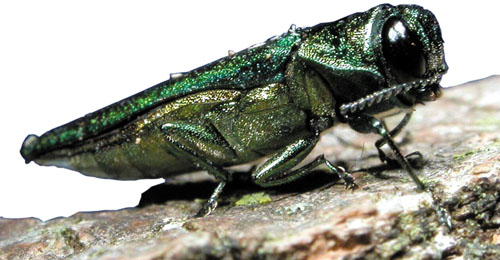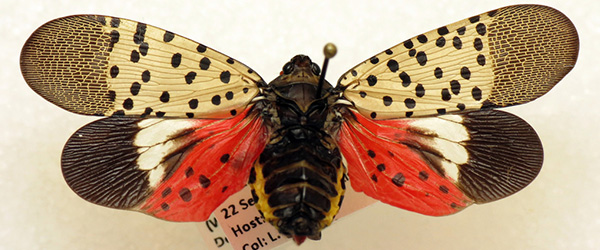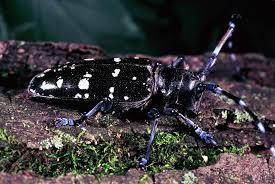THE LEAFLET

August is Tree Check Month
“A 10-minute walk could save your trees.” This is the message of August’s Tree Check Month, the United States Department of Agriculture’s (USDA) initiative to remind everyone to check their trees for damaging invasive pests. Regularly examining your trees can help you know what to look for when identifying potentially destructive species in or around your trees. Worried something is wrong with your tree? Our qualified, friendly residential arborists can always come take a look through our Fee for Service program. If you think you spot any of these insects, contact your local extension specialist.
Unfortunately, there are a lot of invasive bugs affecting DMV trees (and this is just a short list!):

Joining the ranks of mosquitoes as one D.C.’s dreaded pests is a small, shiny green beetle, the Emerald Ash Borer (known as EAB). These small green beetles are from East Asia and pose a devastating threat from the tree from which it gets part of its name: the ash. There’s a near 100% mortality rate to ash trees it invades. The adult beetles themselves don’t cause harm – but their offspring burrow through the layers of bark which disrupts the flow of nutrients throughout the tree, thus killing the tree from the inside out.
 While not a direct threat to humans, the spotted lanternfly is a relatively new invasive species to our area and we’re already bracing ourselves. While this pest is quite eye-catching, the trail of destruction it leaves is not. Trees such as the tree of heaven and willow will develop weeping wounds when exposed to them. These wounds will leave a greyish or black trail along the trunk. The sap attracts other insects to feed, notably wasps and ants. That’s not the only trouble caused by the spotted lanternfly: Both nymphs (immatures) and adults cause damage when they feed, sucking sap from stems and leaves. This can reduce photosynthesis, weaken the plant, and eventually contribute to the plant’s death.
While not a direct threat to humans, the spotted lanternfly is a relatively new invasive species to our area and we’re already bracing ourselves. While this pest is quite eye-catching, the trail of destruction it leaves is not. Trees such as the tree of heaven and willow will develop weeping wounds when exposed to them. These wounds will leave a greyish or black trail along the trunk. The sap attracts other insects to feed, notably wasps and ants. That’s not the only trouble caused by the spotted lanternfly: Both nymphs (immatures) and adults cause damage when they feed, sucking sap from stems and leaves. This can reduce photosynthesis, weaken the plant, and eventually contribute to the plant’s death.
 The longhorn beetle has steadily been making its way through New York City, New Jersey, Chicago, Massachusetts, Ohio and even Toronto, Canada. One of the main issues with Asian longhorn beetles, unlike the spotted lanternfly or the emerald ash borer mentioned above, is its affinity for a variety of hardwood tree species especially maples, elms, willows, and birches. Considering maple syrup and fall foliage are big economic drivers in the affected regions, the Asian longhorn beetle has the potential to not only devastate landscapes, but also to devastate crucial industries outside of forestry. Thankfully they’re quite distinctive looking with small white spots and large black and white antennae.
The longhorn beetle has steadily been making its way through New York City, New Jersey, Chicago, Massachusetts, Ohio and even Toronto, Canada. One of the main issues with Asian longhorn beetles, unlike the spotted lanternfly or the emerald ash borer mentioned above, is its affinity for a variety of hardwood tree species especially maples, elms, willows, and birches. Considering maple syrup and fall foliage are big economic drivers in the affected regions, the Asian longhorn beetle has the potential to not only devastate landscapes, but also to devastate crucial industries outside of forestry. Thankfully they’re quite distinctive looking with small white spots and large black and white antennae.